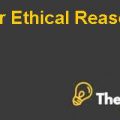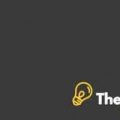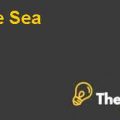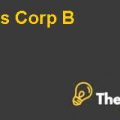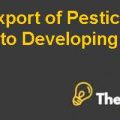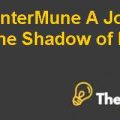
a. Major Ethical Lapse
The drivers of organizational productivity is the Cocoa exported from West Africa, where it employees children to reap cocoa for its fine-manufacturing of chocolate. This is child labor, where they are not given freedom to study and rather they are trafficked through the company’s suppliers to reap Cocoa for them. They live an intolerable living and they are abused if they try to run etc. Hershey has been accused for this; several times to disclose their fair trade agreement by the administration somehow or the other runs away with it (Eleanor, 2012). It can be seen that though it is acknowledged by the company that they are lapsing ethics, yet they are not taking actions against their suppliers so as to stop child abuse along with child labor and child trafficking. To add fuel to this fire, reports from media claim that Hershey provides its full support to the issues of unlawful practices carried by its suppliers (Eleanor, 2012).
The company in the year 2011 was found guilty to exploit and mistreat employees by making them work under horrible conditions (Eleanor, 2012). In addition, it doesn’t provide safe working conditions to its employees that raise ethical concerns from human right groups. Personnel management and retention through safe practices is the bottom line for carrying business today and when such things deviate from the ethical arena, legitimization occurs. As consumers are unaware of the fact that to what extent the companies like Hershey are harming societal values through harsh behavior with its employees, hence, they wouldn’t stand against Hershey’s products.
1. Part (C): ANALYSIS AND RECOMMENDATIONS
a. Analysis
The analysis of Hershey Company is being done from three ethical perspectives which include: utilitarianism, virtue and capitalism. From a utilitarian perspective, it can be observed that Hershey is following the partial model of utilitarianism where it is focusing on profits at the expense of gross societal harms. Hershey’s use of students who wanted to experience American individualistic life by practicing at this giant company was an attempt to use cheap labor at their maximum level. The deteriorating work conditions in the factory shows that Hershey itself didn’t value its code of conduct for creating value for the society and employees.
Secondly the virtue ethics analysis shows that Hershey’s unethical behavior is producing a negative image in the society for this prospective industry and the business alike. Hershey’s actions were in just, such that it produced a negative image in the mind of foreign students about American individualistic culture. The students were asked to lift heavy loads and work long hours despite of the fact that the work assigned was different from what the student’s job description was.
Thirdly and lastly, the company was following a model of capitalist justice. This can be evaluated by the use of their child labor practice. They held the major ownership to the product legally and claimed to contribute more to the society; therefore, they demanded highest share in the profits. However, this is ethical fading such that by any means the company did not contribute more, except for providing the resources to do so by acting as an intermediary. The highest contribution is made by the children from whose efforts the Cocoa (major ingredient in chocolate manufacturing) is being reaped. These children push large sacks of bags and handle unsterilized worst in condition instruments such a blades etc. from which they crack open the Cocoa seed plant.
b. Recommendation
The company is not complying with international trading arrangements. People at West Africa and the children out there are pushed to live below poverty line because these companies shift their operations to low labor cost countries and restrict the improvement in the standard of living for their citizens. These people send their children out to earn a better living on an average at the expense of education. All of this needs a structural revamp. As Hershey’s is doing this from a greater period of time; hence, it needs to internalize the societal costs in its pricing structure. The pricing structure needs to be set such that a portion of the societal costs are spent on the educational reforms of the West African Cocoa farmers and children..............................
This is just a sample partial case solution. Please place the order on the website to order your own originally done case solution.

